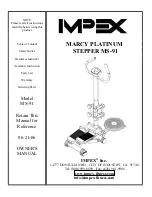
HE-8000
5. OPERATION
48
5-4-5. Underlay programs
Four types of underlay patterns are available. These four types can also be combined. Refer to the
examples of use to determine which type of underlay to use.
1. Underlays sewn together
•
This type of underlay pattern is used for resewing if the knife has operated before the seam has been
formed, such as when sewing is complete without the upper thread breaking even though the lower
thread has run out. It is particularly useful for sewing up the hole made by the knife beforehand at
times when zigzag stitches do not hold properly.
•
The pile of fluffy fabrics is pressed down before sewing, so that the buttonhole finish looks more
attractive.
2. Saw-shape underlay
•
This type of underlay is useful for stretch materials to prevent them from stretching.
•
It is useful for preventing dimples from forming during bar tacking. Radial-type buttonholes are useful
for preventing dimples.
•
It is also useful for strengthening the buttonholes to stop the seam from unravelling, which can often
happen with materials with coarse weaves.
3. Rectangle underlay
•
This type of underlay is useful for stretch materials to prevent them from stretching.
•
This is effective in preventing seams from unravelling in materials which appear not to have a very
coarse weave. It also serves to reinforce the buttonhole.
•
If the seam is hidden and the seam width seems small, you can sew 2 - 3 rectangle underlays to make
the material look more voluminous.
•
Underlays such as (1) to (9) in the illustration can be sewn in slightly different positions by changing
the setting value for parameter No. 50 (underlay offset) so that the seam does not become too stiff and
to further increase the feeling of volume.
4. Zigzag underlay stitch
•
This is particularly effective in preventing seams from unravelling in materials which appear not to
have a very coarse weave. It also serves to reinforce the buttonhole.
(If parameter No. 58 - Zigzag width [Dimension A in the illustration] is set to about 0.4 mm, the zigzag
underlay stitches will be even stronger than other underlay stitches.)
* If parameter No. 58 is set after saw-shaped underlay stitches or rectangle underlay stitches have been
set, zigzag underlay stitches will only be sewn for the first cycle of underlay stitching.)
NOTE:
When sewing underlays, the number of bar tacking stitches will increase, so that thread breakages or broken
needles may occur. To avoid such problems, reduce the number of underlays or drop the sewing speed.
* When underlays are sewn together, the order of sewing is underlays sewn together
→
saw-shape
underlays
→
rectangle underlays.
Parameter No. 45 46 47 58
Underlays sewn together Saw-shape underlays Rectangle underlays Zigzag underlay stitch
2125Q
(5)
(4)
(3)
(2)
(1)
(7)
(9)
(8)
(6)
















































